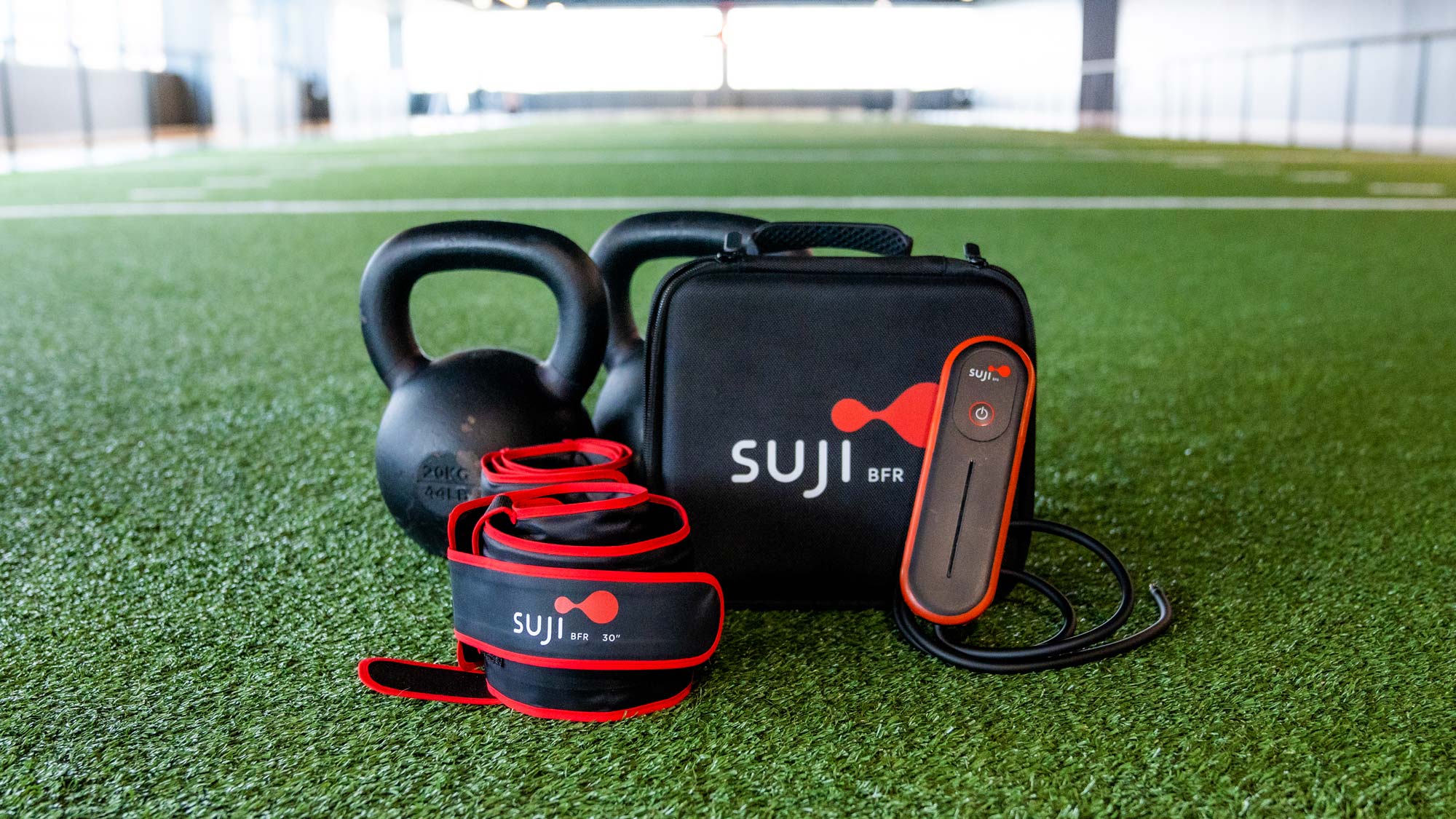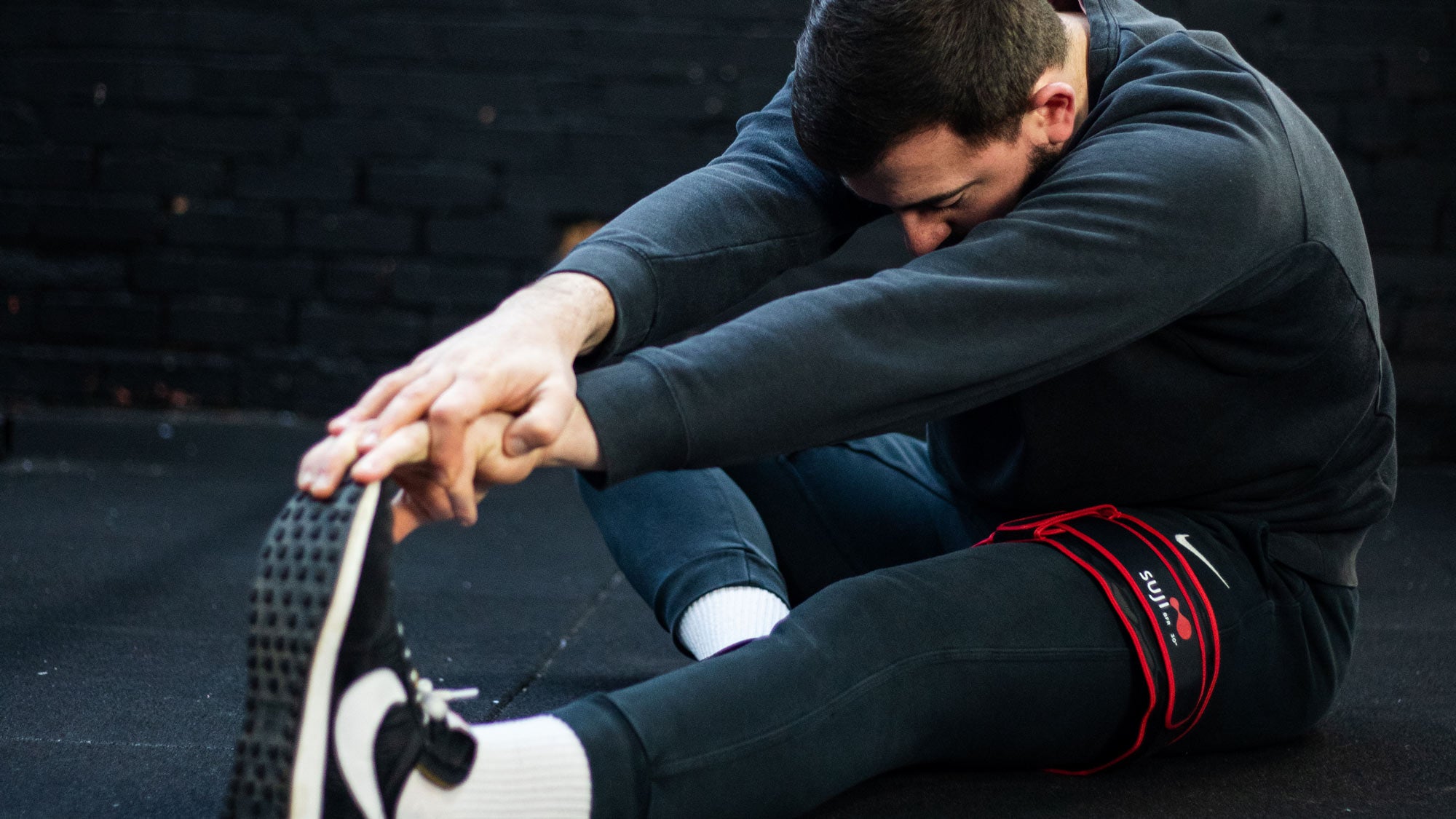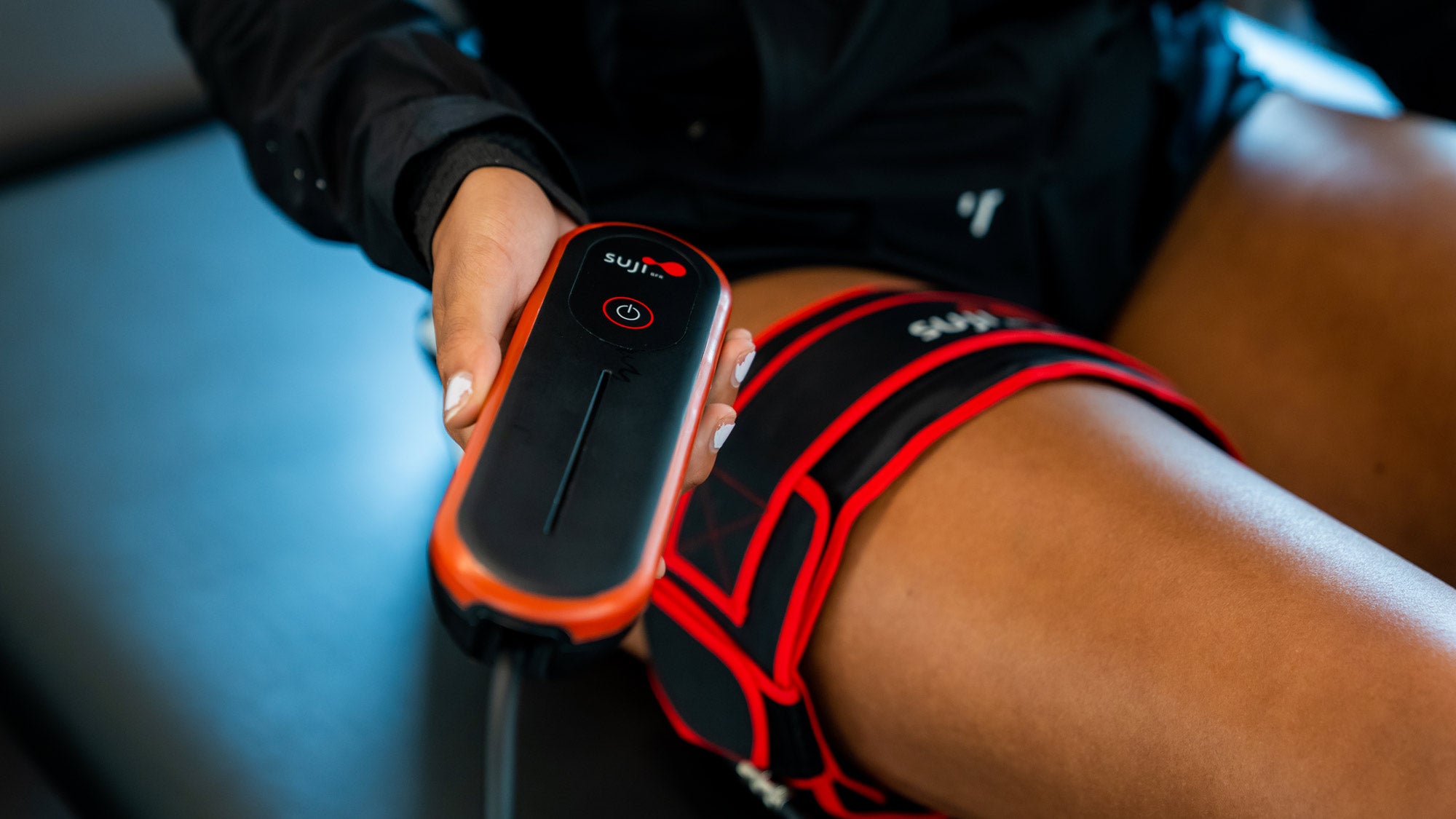Introduction:
Blood flow restriction training (BFR) has emerged as a popular training strategy to achieve improvements in muscle mass and strength using low training intensities (
What is blood flow restriction training?). This type of training has been shown to result in similar muscle adaptation as high load training via a variety of different mechanisms. While BFR has received significant attention within the scientific literature, consensus as to the safety and the optimal use of BFR to improve performance outcomes remains speculative. A variety of different devices have been used to restrict blood flow, including pneumatic and non-pneumatic nylon cuffs, traditional blood pressure cuffs, elastic straps and elastic knee wraps. Likewise, different strategies have been used to determine the restrictive pressure to safely optimize training adaptations. Occlusion pressures have been determined based off ratings of perceived discomfort, relative systolic blood pressure, relative limb circumference and previous research findings. Within the literature a range of restrictive pressures have been used from 60mmHg through to over 250mmHg. It appears as though the occlusion pressure required to restrict blood flow is highly individual and determined by several intrinsic (limb circumference, limb composition and haemodynamic variable) and extrinsic factors (cuff width and cuff material). The restrictive pressure required to restrict an individuals arterial blood flow is referred to as their limb occlusion pressure (LOP) or arterial occlusion pressure (AOP) and prescribing BFR training based off personalized LOP is fast evolving as the gold standard. Innovative performance company
SujiBFR has developed a BFR cuff system that can automatically calculate users LOP and provide bespoke exercise programming solutions that ensure the safe and effective implementation of BFR training.

SujiBFR has developed a BFR training cuff that can automatically detect LOP and optimise the safety and effectiveness of BFR training.
Limb occlusion pressure:
The purpose of BFR is to occlude venous outflow and restrict arterial blood flow to the muscle. Because of the way blood is transported through arteries and veins differently, a higher restrictive pressure is required to occlude arterial blood flow (venous occlusion ~60mmHg, arterial occlusion ~150mmHg) (Kacin et al 2015). LOP is typically determined via Doppler ultrasonography. This technology bounces high frequency sound waves off circulating blood cells to determine to estimate blood flow and is often used to diagnose vascular health disorders. Several factors can influence LOP. The dynamics of the cuff used to restrict blood flow appears to have a significant impact on the pressure exerted on the vasculature. Wider cuffs occlude arterial blood flow at a much lower overall intensity than narrow cuffs, which may have implications for training adaptations and user safety. Likewise the material of the cuff (elastic vs. nylon) may also have implications for how force is transmitted across the limb. It is therefore considered that identifying each individuals LOP relative to the restrictive device they are using, is currently best practice in safely and effectively administering a BFR training protocol.
Safety:
There is strong evidence that BFR training is a safe and effective method of training (
Is Blood Flow Restriction Training Safe?). However, there remains some concerns over its use should BFR be used inappropriately. The primary safety concerns surrounding BFR are: mechanical injury to the skin, muscle or peripheral nerves, venous thrombosis due to vascular damage and disturbed haemodynamics, and augmented arterial blood pressure responses due to high level of exertion couple with increased vascular resistance (Kacin et al, 2015). Each of these risk factors can be associated with high restrictive pressures. Excessively high cuff pressures result in high levels of compression and shear stress to the structures beneath the cuff and increase the risk of soft-tissue damage, compression of the peripheral nerve and vasculature disruption. Personalized occlusion pressure ensures users avoid pressures that are too high relative to cuff dynamics, limb circumference or blood pressure, and minimize risk of complication.
Performance:
BFR training is typically used to trigger increases in muscle mass and strength. There are been considerable research exploring the optimal restrictive pressure to optimize changes in muscle adaptation using BFR training. Kacin and Stazar (2011) found that using a wider cuff during knee extension exercise reduced muscle hypertrophy at the site of the cuff. As discussed above, the use of a wider cuff transmits pressure through soft-tissue more effectively than a narrow cuff, thus requiring a lower pressure to occlude blood flow. The author hypothesized that the wide cuff, coupe with high occlusion pressures, may have caused excessive compressive forces to the soft-tissues beneath the cuff and impaired muscle growth. More recently, Counts et al (2016) demonstrated that relative pressures as low as 40% LOP may be all that is required to optimize skeletal muscle adaptation. Further research is required to better understand how different relative pressures are implicated in other beneficial responses of BFR training such bone mineral density, vascular adaptations and tendon remodelling. Using relative LOP to prescribe restriction pressure allows users to adopt a system of progressive overload when prescribing restriction pressures alongside exercise intensity, permitting users to continually evolve their BFR training to target continued improvements in performance.
Adherence:
The occlusion pressure used during BFR training can have implications for the perceptual responses to exercise. Hollander et al (2003) suggested that ischaemic pain, metabolite accumulation and artery deformation could create enhanced perceptions of pain associated with high occlusion pressures. While the research surrounding BFR and pain remains inconclusive, several papers have since supported to concept that high occlusive pressures can increase user discomfort. Changes in perceptual responses are important as they may ultimately dictate whether a user adheres to the chosen form of exercise. Prescribing exercise sessions based of individual LOP enables users to progressively increase the stimulus of BFR within safe ranges in a way that is safe, effective and limits pain.

Using the SujiBFR system, users can safely and effectively prescribe BFR training session based of relative LOP and research backed training programmes.
SujiBFR device:
The SujiBFR device is in the industries first artificial intelligence powered BFR training system. Prior to training with the system, users must complete a calibration process that will determine resting LOP in both the upper and lower limb. Internal testing has shown the Suji device to be accurate within 12mmHg, which compares to an automated surgical tourniquet which demonstrates accuracy within 15mmHg. The calibration process takes no longer than 3-5 minutes per limb and is a simple on-screen and step-by-step process via the mobile application controlling the Suji device. Once the calibration is completed users have the option of selecting from a wide variety of pre-programmed training sessions specifically targeted at muscle hypertrophy, cardiovascular fitness and pain mitigation. The programmes have been developed by industry leading strength and conditioning professionals and guide users through a safe and progressive training regime. Unlike other BFR equipment, the Suji device automatically stores the users safe working pressure zones and exercise programmes to allow users track their progress and achieve continued and sustained success in their BFR training journey.
References:
- Kacin, A., et al., Safety considerations with blood flow restricted exercise. Annales Kinesiologiae, 2015. 6(1): 3-26. https://www.researchgate.net/publication/293767736
- Kacin, A. & Strazar, K., Frequent low-load ischemic resistance exercise to failure enhances muscle oxygen delivery and endurance capacity. Scandinavian Journal of Medicine and Science, 2011. 21 (6): 231-241. https://onlinelibrary.wiley.com/doi/abs/10.1111/j.1600-0838.2010.01260.x
- Counts, B. R., et al., Influence of relative blood flow restriction pressure on muscle activation and muscle adaptation. Muscle and Nerve, 2016. 53 (3): 438-445. https://onlinelibrary.wiley.com/doi/abs/10.1002/mus.24756
- Hollander, D. B., et al., RPE, pain, and physiological adjustment to concentric and eccentric contractions. Medicine & Science in Sport & Exercise, 2003. 35 (6): 1017-1025. https://pubmed.ncbi.nlm.nih.gov/12783051/
 SujiBFR has developed a BFR training cuff that can automatically detect LOP and optimise the safety and effectiveness of BFR training.
SujiBFR has developed a BFR training cuff that can automatically detect LOP and optimise the safety and effectiveness of BFR training. Using the SujiBFR system, users can safely and effectively prescribe BFR training session based of relative LOP and research backed training programmes.
Using the SujiBFR system, users can safely and effectively prescribe BFR training session based of relative LOP and research backed training programmes.



Leave a comment
This site is protected by hCaptcha and the hCaptcha Privacy Policy and Terms of Service apply.